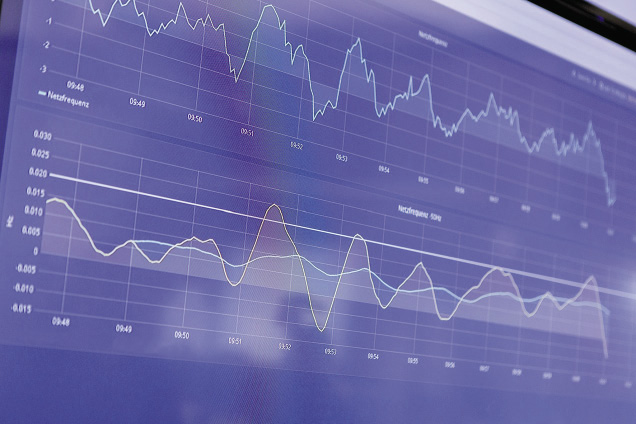Fundamental to new initiatives to develop software platforms is the creation of a new energy ecosystem. In this ecosystem, complementary components all work seamlessly together, so the energy generated, consumed, and billed can be used effortlessly by residential and commercial owners. Examples of these components include electric vehicles (EVs), smart home appliances, heating and cooling systems, smart meters, and solar PV in combination with battery energy storage systems.
Traditionally, solar inverters and smart meters have been considered disparate and not interconnected. However, in the new digital energy world, software platforms are unlocking what were once siloed and separate components.
Solar inverter suppliers have been developing their own proprietary in-house Internet of things (IoT) software platforms to sell solar and energy storage hardware and digital services to commercial business chains, large utilities, and other non-traditional customers with access to thousands of homeowners.
Smart meter suppliers in recent years have been similarly strategically diversifying their portfolios from hardware vendors, in order to become service providers themselves. As hardware prices have declined rapidly in recent years, PV inverter makers, smart meter manufacturers, and other cleantech energy hardware suppliers have been rapidly pivoting their businesses to provide IoT energy solutions.
The four fundamental pillars of an IoT strategy are as follows: connect, collect, compute, and create. Businesses connect devices that collect data for computational analysis to create unique solutions. For many smart-meter and PV inverter suppliers, the first two pillars have been in progress for years, but the next stage of their growth will focus on data computation and the creation of new business opportunities.
Growing the installed base
The data gained from IoT enables the creation of more complex applications. One example is condition monitoring, which is the process of monitoring the condition and health of a device or system. This monitoring allows for the continuous automated assessment of products and relevant infrastructure, which can highlight any potential issues or the need for repairs. These insights allow for planned maintenance and a reduction in energy supply downtime.
SolarEdge and other suppliers boast a large installed base of inverters in certain utility areas and can add battery energy storage systems to their PV systems. Recently, these suppliers have been piloting virtual power plants (VPPs), which allow utility companies to potentially aggregate multiple residential PV and energy-storage systems and use the homeowners’ batteries to store or export electricity, to help balance the grid and reduce electricity production volatility. While this VPP concept is still in its infancy, it could be an additional revenue source for PV inverter suppliers in the future.
Smart hardware to aid utilities
To truly gain a holistic view of what is happening in this new energy landscape, utility companies need to shift from a singular product-grouping view to a total-system view of the new energy ecosystem. Doing so vastly increases the amount and depth of data available for more complex solutions under their control, such as condition monitoring, asset health management, additional renewables penetration, and battery energy-storage systems.
However, companies need to change their business model if they want to survive and succeed in such a data-heavy environment. Smart meter and inverter suppliers that evolve from ‘product-only’ to ‘system view and services’ need to increase their range of utilities and other potential clients.
In recent years, SMA and other PV inverter suppliers have been developing platform systems where the inverters are the ‘brains’ of the system. Doing so allows battery systems, EV charging and heating and cooling systems, and other hardware components, to be controlled seamlessly. This helps homeowners and commercial customers reduce their energy consumption. ABB and other industrial players have produced software platforms that can help utilities manage distributed energy resources, like renewables and battery-energy storage.
The desire for services within smart metering is predominantly focused on “meter-to-cash” billing automation. IHS Markit estimates $56.9 billion will be spent on meter-to-cash focused solutions globally between 2019 and 2023. Yet, IoT also opens many more revenue streams, as metering data can be used with the VPP and to ensure power quality, fault analysis, health, and condition monitoring.
The landscape begins to blur
This business-model evolution has blurred the competitive landscape, as former competitors can suddenly become partners or even clients. In addition, IT providers, platform operators, and other entirely new competitors are stepping into the IoT in energy environment. For example, Huawei is a leading solar inverter supplier, but in the coming years it may partner with other solar inverter or smart meter suppliers as 5G is rolled out, enabling utilities to handle more data and transfer it faster.
The views and opinions expressed in this article are the author’s own, and do not necessarily reflect those held by pv magazine.
This content is protected by copyright and may not be reused. If you want to cooperate with us and would like to reuse some of our content, please contact: editors@pv-magazine.com.








1 comment
By submitting this form you agree to pv magazine using your data for the purposes of publishing your comment.
Your personal data will only be disclosed or otherwise transmitted to third parties for the purposes of spam filtering or if this is necessary for technical maintenance of the website. Any other transfer to third parties will not take place unless this is justified on the basis of applicable data protection regulations or if pv magazine is legally obliged to do so.
You may revoke this consent at any time with effect for the future, in which case your personal data will be deleted immediately. Otherwise, your data will be deleted if pv magazine has processed your request or the purpose of data storage is fulfilled.
Further information on data privacy can be found in our Data Protection Policy.